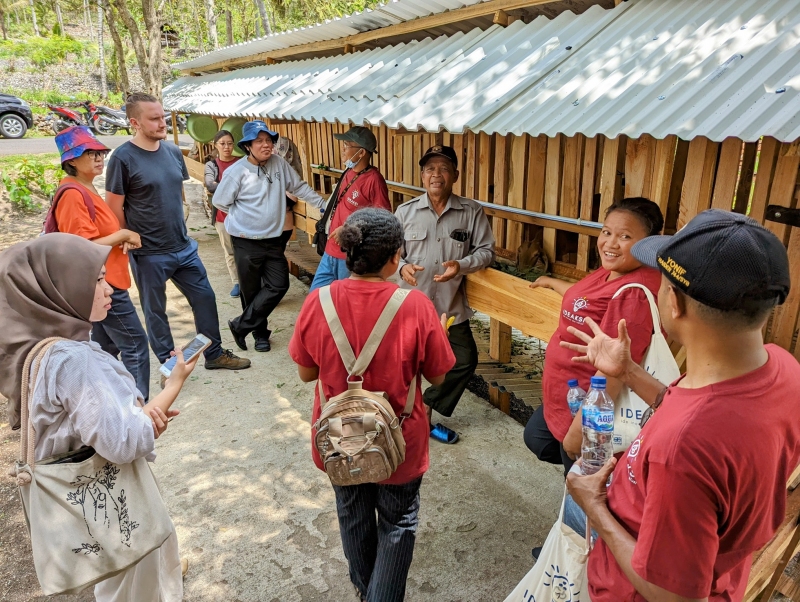
An exchange of learning is a crucial part of YAKKUM Emergency Unit’s IDEAKSI Program.1 In its approach to community-led solutions, IDEAKSI builds a network of community innovators as an enabler for collaboration and sharing among the local communities.
In the expanded ecosystem of the Second IDEAKSI,2 the sharing of learning has become richer with diverse perspectives of 23 local innovators. Their experiences in the local contexts of Yogyakarta, West Timor, Jakarta, and Central Sulawesi open up new opportunities to discern their current innovation processes, address potential challenges, and amplify good practices.
A reflective meeting in December 2023 made the sharing of learning possible. For the first time, the innovators from Central Sulawesi and West Timor came to Yogyakarta to get to know more about the innovations other groups are working on. They also met for training on community journalism and setting up feedback mechanisms.
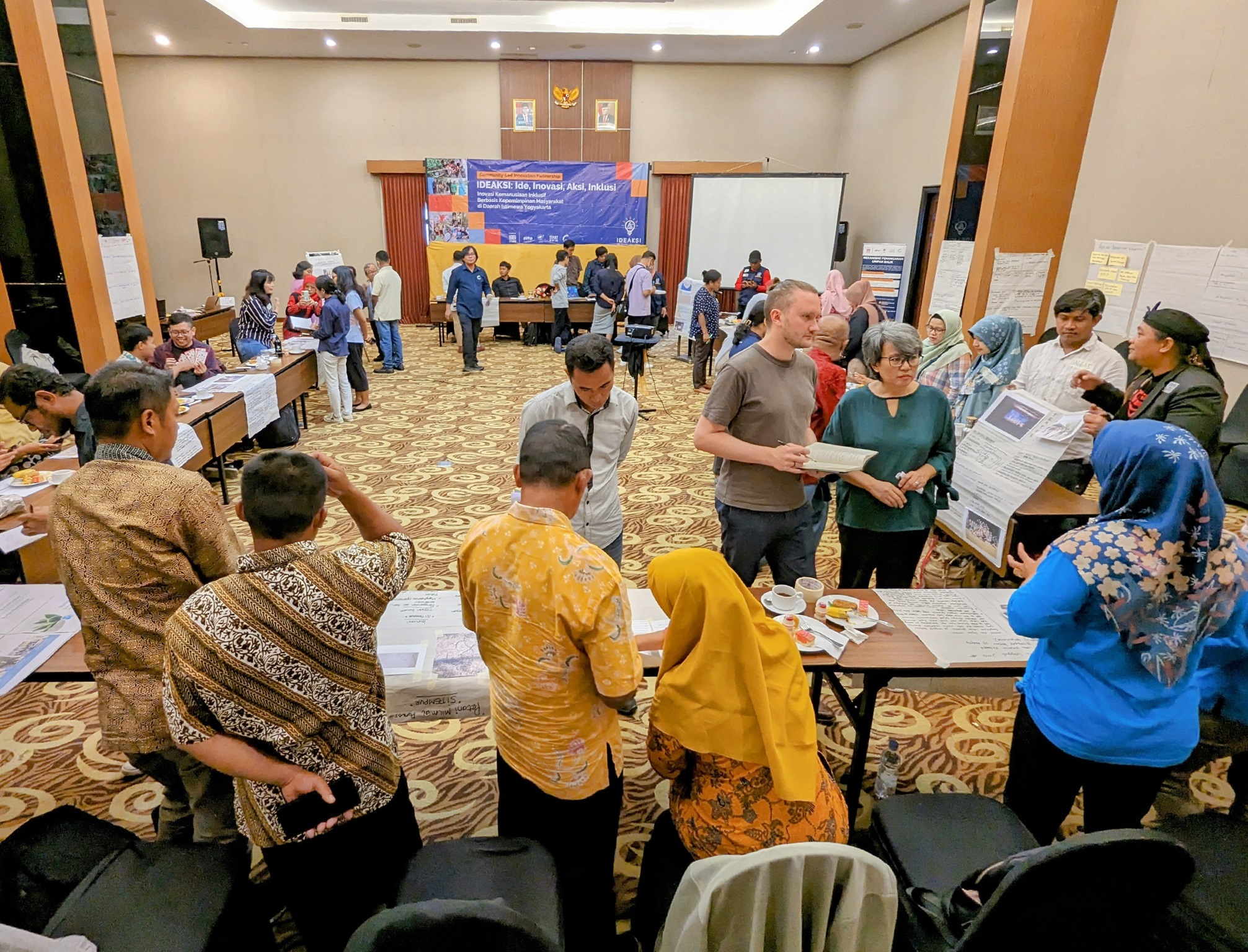
Reflective meeting participants walk around to get to know about IDEAKSI innovations in Yogyakarta.
Sharing experiences on innovation
The learning exchange proved to be beneficial not only for the new innovators from West Timor and Central Sulawesi, but the innovators in Yogyakarta also learned from their experiences. The reciprocity was prominent during the field visits.
As many of the innovators are farmers, they share many things in common, such as experiences in goat farming. Nikson Tenistuan, who runs Glaomori Meto moringa-based food product business in Kupang, suggested that Ngudi Makmur farmers try feeding goats in their IDEAKSI project with moringa (kelor) leaves. He saw that the reproduction of his goats improved, and so did the meat quality.
"In Kupang, I conducted a trial with two goats. One was fed white leadtree (lamtoro) leaves, and the other was fed moringa leaves. The results were different. The color of the meat was different, it was fresher, and the taste was different. If the meat was put in the refrigerator, the goat that ate moringa leaves was able to be stored longer. And maybe the urine and feces could be compared to make better quality organic fertilizer."
The farmers received the suggestion delightfully. Moringa trees are widely available in Gunungkidul.
Broto, a YEU community organizer for IDEAKSI in Yogyakarta, also confirmed the feasibility of this trial. Having lived in Nusa Tenggara Timur, he observed that the soil characteristics are similar to his hometown of Gunungkidul, where he lives next to Ngudi Makmur’s Girikarto village. Thus, moringa thrives in both areas.
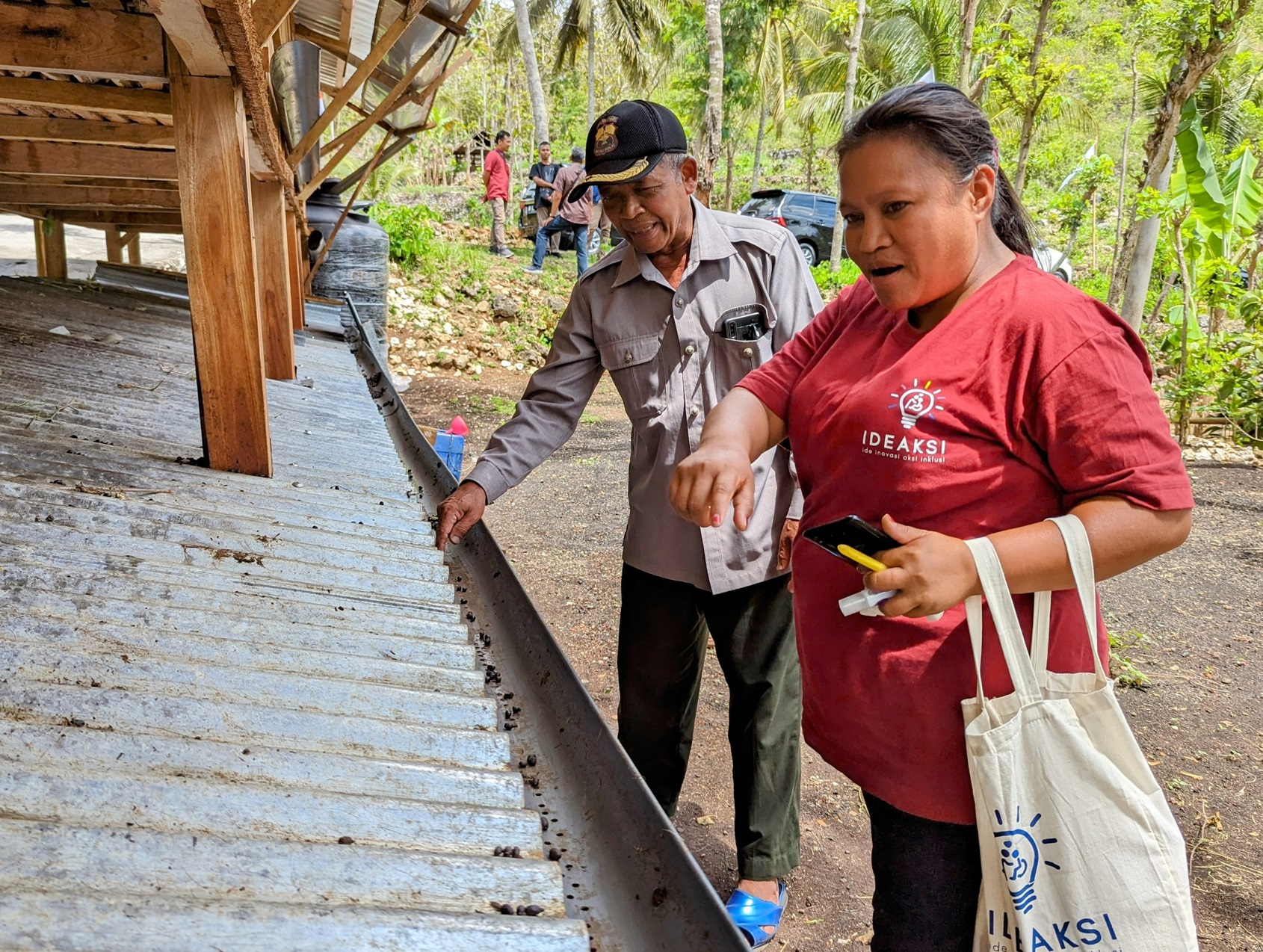
Ngudi Makmur group leader asnwers a West Timor innovator's question in front of the goat shed receptacle.
In return, innovators from West Timor and Central Sulawesi learned to draw lots to fairly distribute baby goats in the future among Ngudi Makmur members of around 20 people. They also got to know how the group divides tasks and builds a sense of responsibility by scheduling maintenance work.
Dwijo Utomo, the leader of the Ngudi Makmur group, also showed his fellow innovators the benefits of rice production on his small, dry land plot using organic fertilizer exclusively. “After not using chemical fertilizers, the crop yield increased, and the soil loosened. If the soil gets too much chemical fertilizer, the soil becomes compact and gets dry easily (hydrophobic)."
Another key takeaway was the understanding that innovation can serve as a powerful tool for social inclusion and sustainability, even when the underlying ideas are not entirely new. The goat farming initiative, for instance, demonstrates that existing practices can be transformed to create inclusive and sustainable solutions, particularly when they empower marginalized communities.
The innovation also brings additional benefits from the collaboration that it requires. Collective actions become necessary in the innovation process when incorporating community leadership aspects, such as gathering feedback from group members and working with different village-level actors like the local government, neighboring residents, and women’s organizations. It fosters social cohesion.
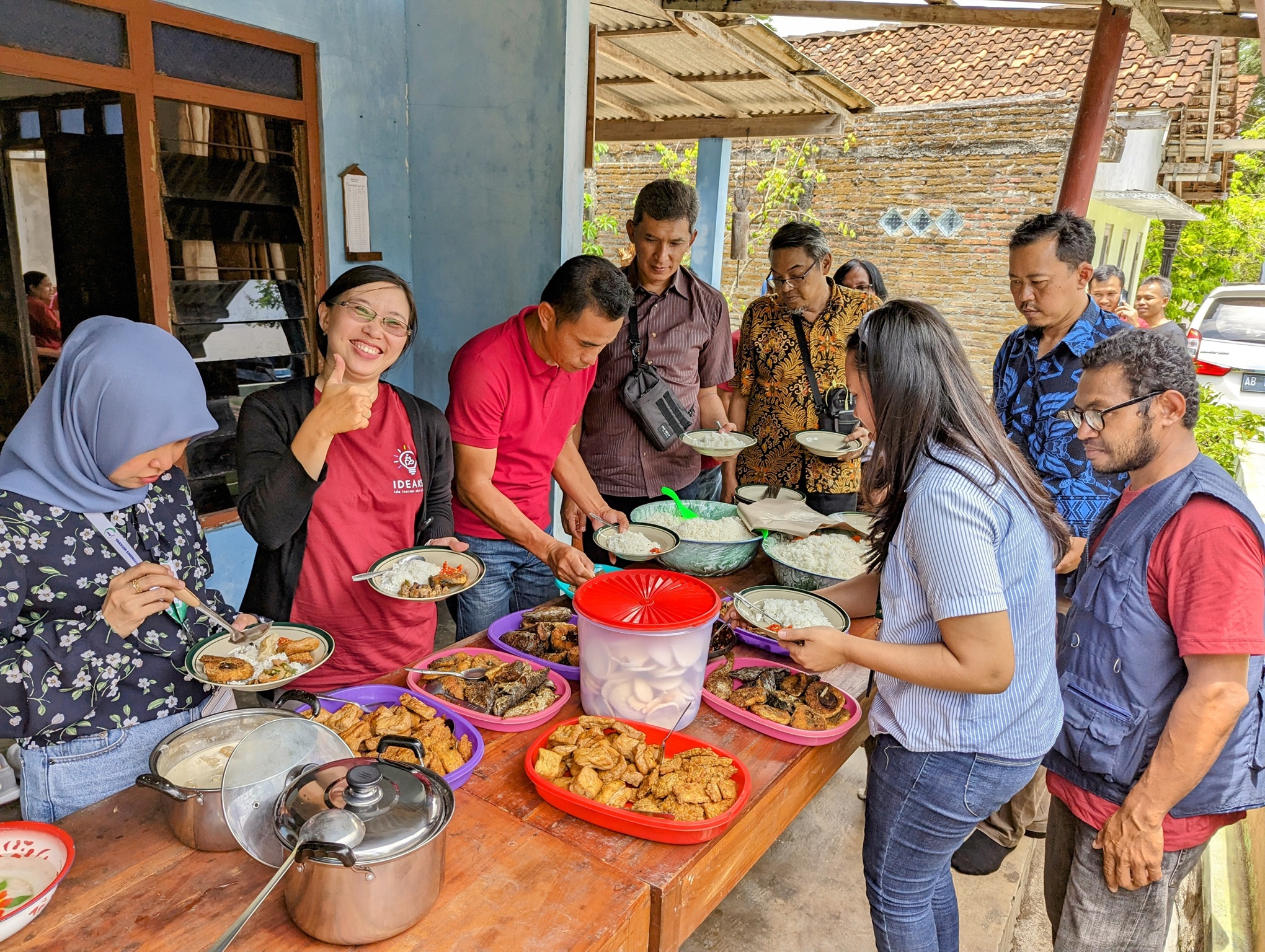
Local delights provided by host innovators.
Local knowledge across the islands
The guest innovators obtained extensive insights into local knowledge as much as they enjoyed the local snacks offered by the hosts. The Prima Gadung Youth Group in Nganjir community, Gunungkidul, used vetiver and various other locally sourced plants as an example of localized solutions.
The Youth Group's partner, Sedulur Nandur Banyu (literally means friends for planting water), emphasized the critical question that laid the foundation of their conservation efforts: “What will my children and grandchildren inherit from me? I need to ensure they have the resources they need to thrive.”
Deeply concerned by the decades-long water scarcity in Gunungkidul, they believe that they must work together to conserve water and plant vegetation to bind the soil, ultimately protecting the environment for future generations.
Imanuel Nuban, who goes by Ima, felt the innovation resonated with him. There are even similar philosophies that call for people to ‘catch’ and store water in his own local language in Timor Tengah Selatan, where he leads a local organization of persons with disabilities.
Ima walks up the hill in Nganjir followed by many others who are struggling.
In the challenging terrain of Nganjir, support was fully given by the sub-village (dusun) government and the community, including older people. The young people are also the ones who came up with the initiatives, which are seen as extraordinary by their innovator guests from Central Sulawesi and West Timor. They asked, “Why are both the young and old so enthusiastic?”
A previous major landslide event opened their eyes. At that time, several households were forced to move farther from their primary source of livelihood. The villagers do not want to be relocated ever again, so they are eager to plant and care for their land.
“50 to 70 years from now, Nganjir will be our home. If we let things continue as they are, where will we live?”
The head of Bolapapu village in Sigi (Central Sulawesi), Yunarto Ferys, felt the incredible experience that he also hopes to be initiated in his own community as well. Sultan, another IDEAKSI innovator from PPDI, a group of persons with disabilities in Central Sulawesi, also had a very positive impression of the learning exchange.
“[I] learned a lot from the innovators with their creative ideas specific to their own contexts,” he said.
A group picture with Suryatmajan village head who attended the visit to Gempita.
A profound impression
Mirsa Hidayani, who has been with Gempita Waste Bank since its creation in 2020, said Gempita innovators and the community it serves were glad to receive such a visit. “Usually some people will ask: why are you preparing drinks? Ah, we are having guests from YEU, from abroad. [They replied,] ‘Ah, it’s like the previous visit?’ They were happy.”
The series of visits was also the first opportunity for Elrha’s CLIP Senior Programme Manager, Rob Whitelaw, to observe the innovations on-site and talk with the respective communities. His 5-day visit was met with much excitement.
For Rob, an important point was understanding the variation of innovators. He noticed that even though they are all focusing on some area of disaster management, how they are doing that and what they are doing can be very different.
“A personal takeaway for me to take back to Elrha is to not forget about the "not big" crises - that most humanitarian crises are of a smaller / medium scale, and so won't get international response/funding.”
Rob takes pictures while walking in a narrow passageway on a river bank where Gempita operates.
Written by: Lorenzo Fellycyano; Edited by: Nanda Husni
1 IDEAKSI stands for Idea, Innovation, Action, and Inclusion, an initiative under the Community-Led Innovation Partnership. It is supported by Elrha, Start Network, and the Asia Disaster Reduction and Response Network (ADRRN) Tokyo Innovation Hub, and funded by the UK Foreign, Commonwealth, and Development Office (FCDO).
The CLIP supports the emergence and development of locally-driven solutions to humanitarian problems in Guatemala, Indonesia, the Philippines, and South Sudan. YAKKUM Emergency Unit (YEU) runs the IDEAKSI program as its CLIP project in Indonesia. As part of the partnership, IDEAKSI seeks to find innovative and inclusive solutions to disaster management for most-at-risk groups, including persons with disabilities and the elderly.
2 The First IDEAKSI (1.0) supported 9 local innovators in the Special Region of Yogyakarta, while IDEAKSI 2.0 now supports 23 local innovators in 3 Innovation Hubs. 15 IDEAKSI 2.0 innovators in the Yogyakarta Hub are supported by YEU. 5 innovators in West Timor, Nusa Tenggara Timur, and 1 innovator in Jakarta are co-supported by the CWS Indonesia Innovation Hub. The final 2 innovators in Central Sulawesi Hub are supported by the YEU office in Palu.
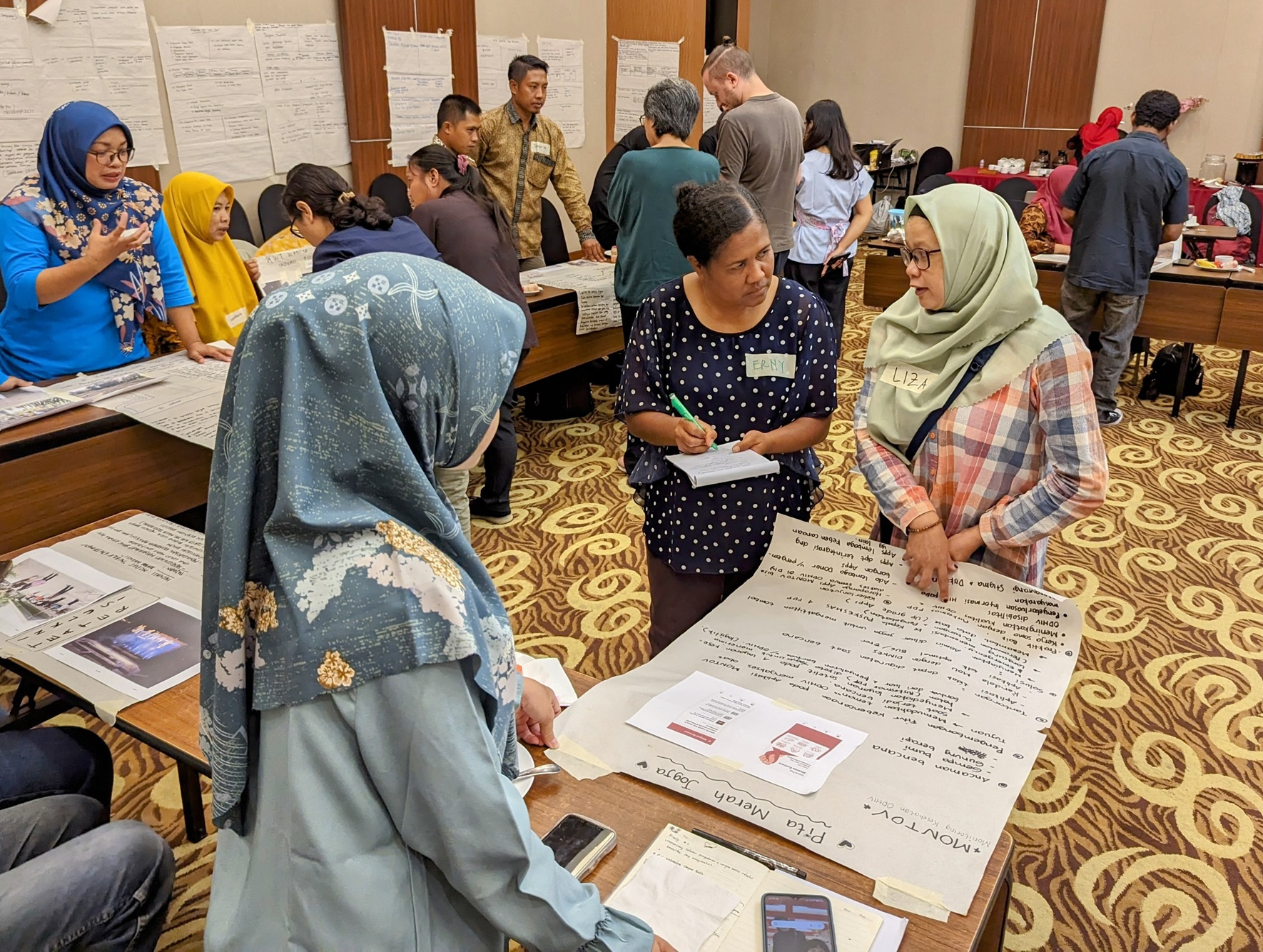
Curiosity is at the center of the reflective meeting activity, where new innovators get the chance to visit exhibit-like innovation booths.


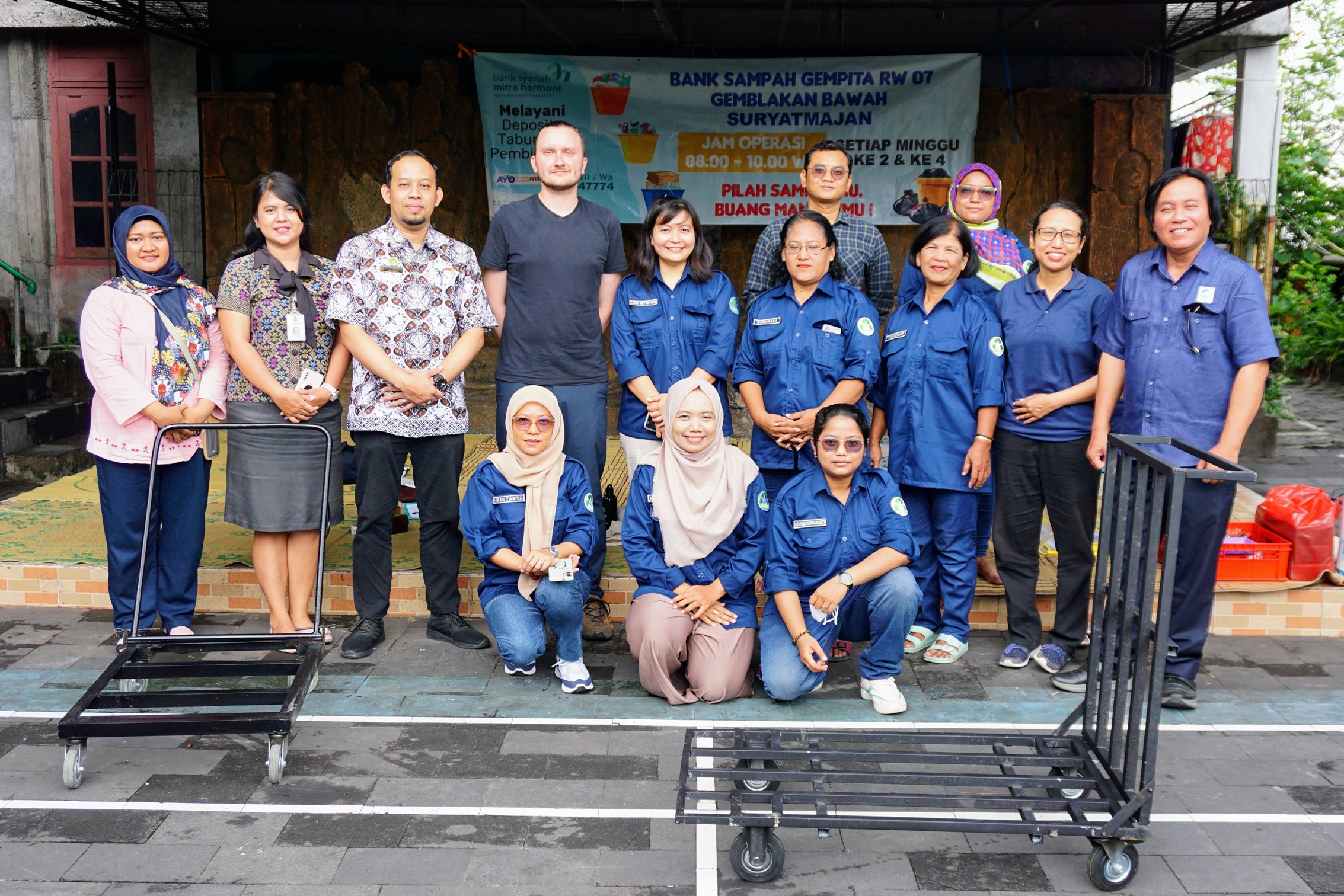
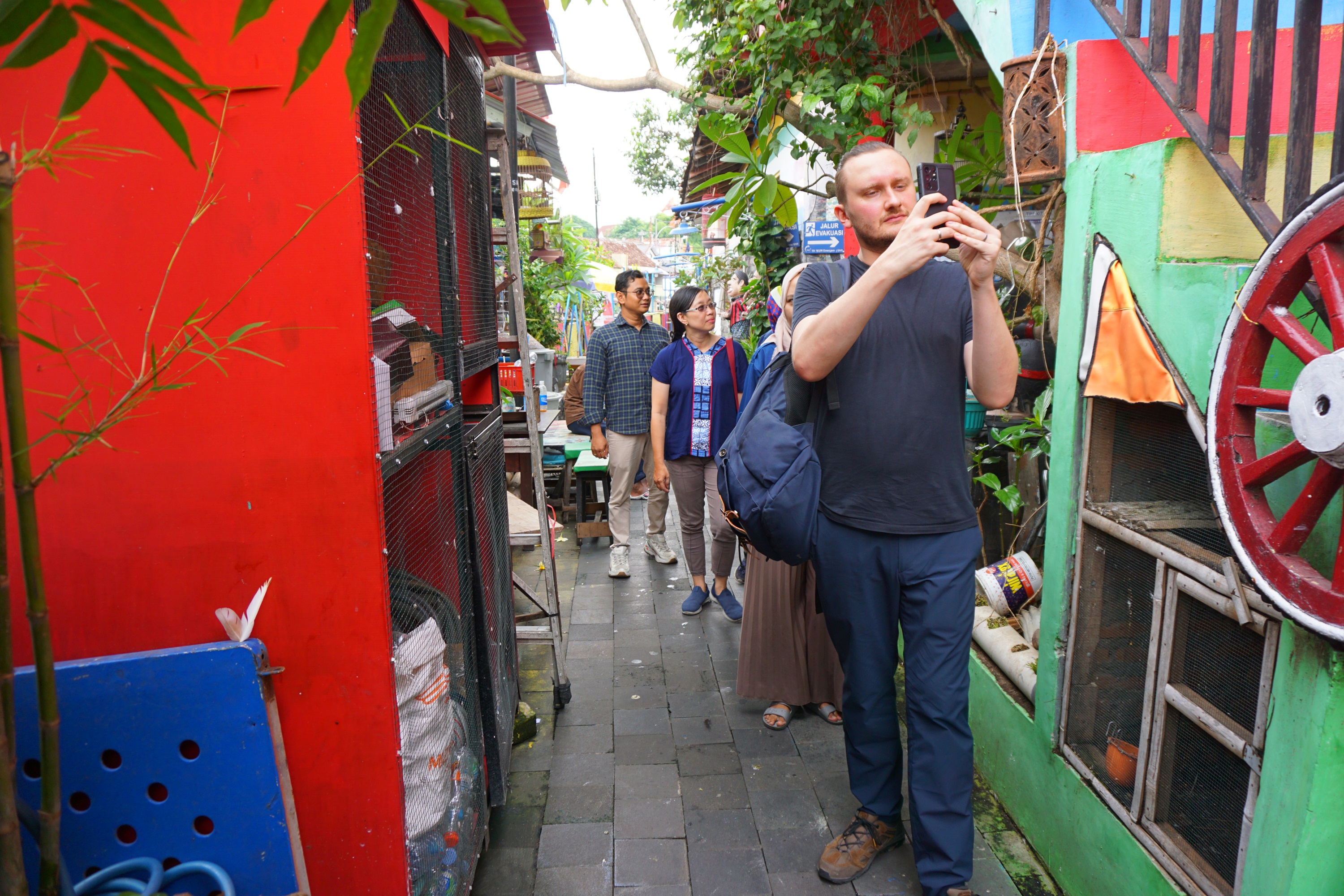


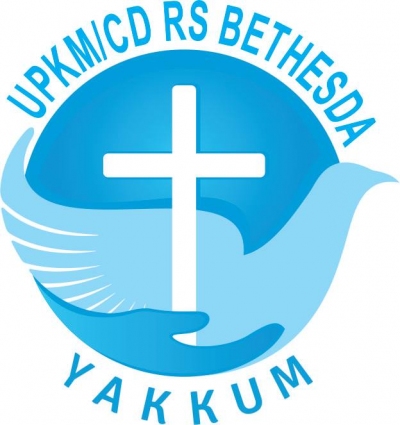












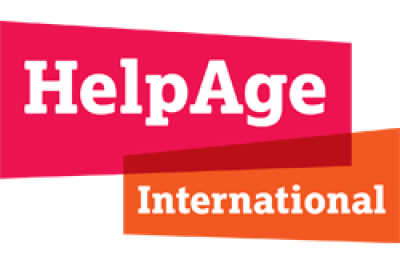








Social Media
@yakkumemergency
yakkumemergency
@YEUjogja